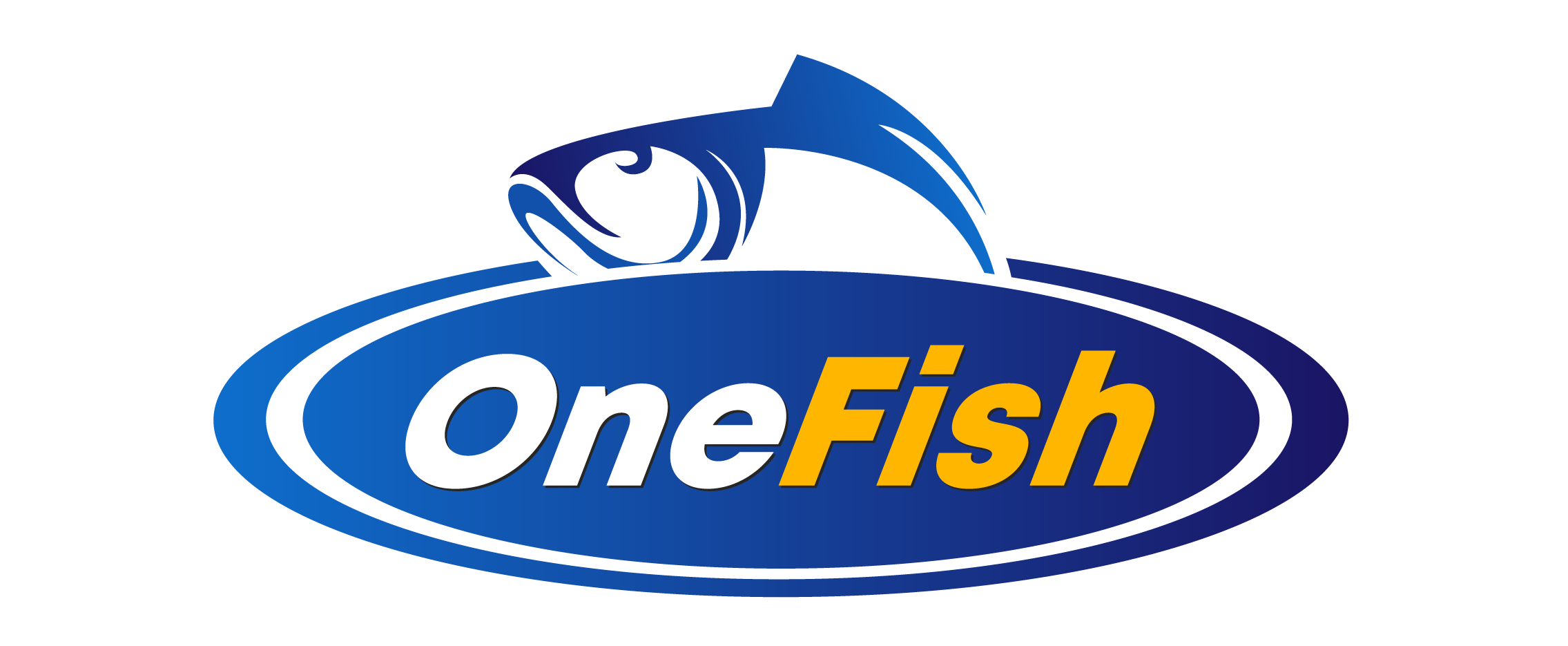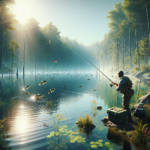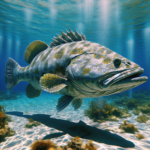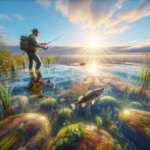Trolling for Yellowfin Tuna in the Gulf of Mexico
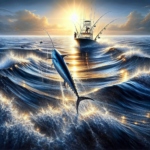
Introduction
Did you know that the Gulf of Mexico is one of the premier destinations for catching Yellowfin Tuna, a species known for its speed and strength? This article will delve into the intricacies of trolling for Yellowfin Tuna in the Gulf of Mexico, covering everything from the best fishing techniques and gear to the top fishing spots and seasonal considerations. Whether you’re a seasoned angler or a novice looking to try your hand at big game fishing, this guide will provide you with all the information you need to succeed.
Understanding the nuances of trolling for Yellowfin Tuna is crucial for any angler aiming to make the most of their fishing expedition. This article will not only help you find the best fishing spots but also master the techniques and gear required to catch this elusive species. Additionally, we’ll cover important aspects like local regulations, safety tips, and conservation practices to ensure a responsible and enjoyable fishing experience.
Background/Context
Historical or Cultural Significance
Yellowfin Tuna, scientifically known as Thunnus albacares, have long been a prized catch for both commercial and recreational fishermen. Historically, the Gulf of Mexico has been a hotspot for tuna fishing, contributing significantly to the local economy and culture. The region’s rich marine biodiversity and favorable conditions make it an ideal habitat for Yellowfin Tuna, attracting anglers from around the world.
Geographical Overview
The Gulf of Mexico is a large ocean basin bordered by the United States, Mexico, and Cuba. It features a diverse ecosystem with a variety of marine life, including the highly sought-after Yellowfin Tuna. The Gulf’s warm waters, abundant food sources, and unique topography create an ideal environment for these fast-swimming predators. The region experiences a subtropical climate, with mild winters and hot, humid summers, making it a year-round fishing destination.
Key Points/Details
Fishing Techniques
Technique Overview
Trolling is the most effective technique for catching Yellowfin Tuna in the Gulf of Mexico. This method involves dragging lures or baited hooks behind a moving boat, mimicking the movement of prey and enticing the tuna to strike. Other techniques like chunking and live bait fishing can also be effective but are generally used in conjunction with trolling.
When and Where to Use
Trolling is best employed in open waters where Yellowfin Tuna are known to hunt. Key locations include offshore oil rigs, underwater canyons, and areas with significant baitfish activity. The best time for trolling is during the early morning or late afternoon when tuna are most active. Seasonal variations also play a role, with peak fishing occurring from late spring to early fall.
Recommended Gear
- Rods: Heavy-duty trolling rods capable of handling large fish.
- Reels: High-capacity, high-drag reels designed for big game fishing.
- Lines: Braided lines with a high pound-test rating for strength and durability.
- Lures: Skirted trolling lures, diving plugs, and cedar plugs are popular choices.
- Bait: Live bait such as mackerel or squid can be highly effective.
Species Information
Species Overview
Yellowfin Tuna are known for their speed, strength, and endurance, making them a challenging and rewarding catch. They are pelagic fish, meaning they inhabit the open ocean rather than coastal areas. Yellowfin Tuna prefer warm waters and are often found near the surface, feeding on smaller fish, squid, and crustaceans. They are highly migratory, moving in schools and covering vast distances in search of food.
Best Practices
To successfully catch Yellowfin Tuna, it’s essential to use the right techniques and gear. Trolling at speeds of 6-9 knots with a variety of lures can help attract these fast-moving fish. Pay attention to water temperature and look for signs of baitfish activity, such as diving birds or surface disturbances. Using a fish finder can also help locate schools of tuna. Patience and persistence are key, as Yellowfin Tuna can be elusive and require time to locate and catch.
Location Information
Top Fishing Spots
- Offshore Oil Rigs: These structures attract baitfish, which in turn attract Yellowfin Tuna.
- Mississippi Canyon: Known for its deep waters and abundant marine life, this area is a prime spot for tuna fishing.
- Green Canyon: Another deep-water location with a high concentration of Yellowfin Tuna.
- Flower Garden Banks: A marine sanctuary with rich biodiversity, offering excellent fishing opportunities.
Regulations and Licenses
Before heading out, it’s crucial to familiarize yourself with local fishing regulations and obtain the necessary licenses. In the Gulf of Mexico, regulations may vary by state and federal waters. Common regulations include size and bag limits, seasonal restrictions, and gear requirements. Always check with local authorities or visit their websites for the most up-to-date information.
Seasonal Considerations
Seasonal Variations
Fishing conditions in the Gulf of Mexico can vary significantly throughout the year. During the summer months, warm water temperatures and abundant baitfish make it an ideal time for Yellowfin Tuna fishing. In contrast, winter months may see reduced activity, although tuna can still be caught in deeper waters. Weather conditions, such as hurricanes and tropical storms, can also impact fishing, so it’s essential to monitor forecasts and plan accordingly.
Best Times to Fish
The optimal seasons for Yellowfin Tuna fishing in the Gulf of Mexico are late spring through early fall. During these months, tuna are more active and easier to locate. Early morning and late afternoon are the best times of day to fish, as tuna are more likely to be feeding near the surface. Night fishing can also be productive, especially around well-lit structures like oil rigs.
Events and Tournaments
Event Overview
The Gulf of Mexico hosts several fishing tournaments and events throughout the year, attracting anglers from around the world. Notable events include the Mississippi Gulf Coast Billfish Classic, the Louisiana Gulf Coast Billfish Classic, and the Texas Legends Billfish Tournament. These events offer opportunities to compete for prizes, showcase skills, and connect with fellow anglers.
Preparation Tips
Preparing for a fishing tournament requires careful planning and practice. Ensure your gear is in top condition, and consider pre-fishing the tournament area to familiarize yourself with the waters. Develop a strategy based on local knowledge and past experiences, and be prepared to adapt to changing conditions. Staying hydrated, well-rested, and focused will also contribute to a successful tournament experience.
Tips and Best Practices
General Tips
- Stay Informed: Keep up-to-date with local fishing reports and weather forecasts.
- Be Patient: Yellowfin Tuna can be elusive, so persistence is key.
- Use Quality Gear: Invest in high-quality rods, reels, and lines to handle the strength of Yellowfin Tuna.
- Practice Good Boat Handling: Smooth, consistent trolling speeds and proper boat positioning can make a significant difference.
Avoid Common Mistakes
- Overloading the Boat: Ensure your boat is not overloaded with gear or passengers, as this can affect performance and safety.
- Ignoring Local Regulations: Always adhere to local fishing regulations to avoid fines and contribute to conservation efforts.
- Using Inappropriate Gear: Using gear that is not suited for big game fishing can result in lost fish and frustration.
Advanced Techniques
- Spread Management: Use outriggers and downriggers to create a wide spread of lures, increasing your chances of attracting tuna.
- Speed Adjustments: Vary your trolling speed to mimic the behavior of different prey species.
- Chumming: Use chum to create a feeding frenzy and attract tuna to your boat.
Gear and Equipment Recommendations
Essential Gear
- Trolling Rods: Heavy-duty rods designed for big game fishing.
- Trolling Reels: High-capacity reels with strong drag systems.
- Braided Line: High pound-test braided line for strength and durability.
- Lures: Skirted trolling lures, diving plugs, and cedar plugs.
- Live Bait: Mackerel, squid, or other baitfish.
Optional Gear/Upgrades
- Outriggers: To spread lures wider and cover more water.
- Downriggers: To troll lures at different depths.
- Fish Finder: To locate schools of tuna more effectively.
- Chum Bucket: To attract tuna to your boat.
Where to Buy or Rent
Local tackle shops in Gulf Coast cities like New Orleans, Biloxi, and Galveston offer a wide range of fishing gear and equipment. Online retailers such as Bass Pro Shops, Cabela’s, and Amazon also provide extensive selections. For those who prefer to rent, many charter services offer high-quality gear as part of their packages.
Safety and Conservation
Safety Tips
- Weather Awareness: Always check weather forecasts before heading out and be prepared for sudden changes.
- Life Jackets: Ensure all passengers wear life jackets, especially in rough waters.
- First Aid Kit: Carry a well-stocked first aid kit and know how to use it.
- Communication Devices: Have reliable communication devices on board, such as VHF radios and cell phones.
Conservation Practices
- Catch and Release: Practice catch and release to help maintain healthy fish populations.
- Respect Regulations: Adhere to size and bag limits, and follow seasonal restrictions.
- Avoid Overfishing: Take only what you need and avoid wasteful practices.
- Protect the Environment: Dispose of trash properly and avoid damaging marine habitats.
Planning Your Trip
Accommodations
The Gulf Coast offers a variety of accommodations, from luxury resorts to budget-friendly motels. Popular options include beachfront hotels, vacation rentals, and fishing lodges. Cities like New Orleans, Biloxi, and Galveston provide a range of lodging choices to suit different preferences and budgets.
Travel Tips
When planning your trip, consider the best routes to your chosen fishing spots. Major airports in New Orleans, Houston, and Tampa provide convenient access to the Gulf Coast. Renting a car or booking a shuttle service can help you reach your destination. If you’re bringing your own boat, ensure it is well-maintained and equipped for offshore fishing.
Additional Activities
The Gulf Coast offers plenty of activities for non-fishing time, making it an excellent destination for families and groups. Explore local attractions such as beaches, wildlife reserves, and cultural sites. Enjoy water sports like kayaking, snorkeling, and diving. Sample regional cuisine at local restaurants, featuring fresh seafood and Southern specialties.
Frequently Asked Questions (FAQs)
What is the best time of year to catch Yellowfin Tuna in the Gulf of Mexico?
The best time to catch Yellowfin Tuna in the Gulf of Mexico is from late spring to early fall, with peak activity occurring during the summer months.
Do I need a special license to fish for Yellowfin Tuna in the Gulf of Mexico?
Yes, you will need a fishing license, and specific regulations may vary by state and federal waters. Always check with local authorities for the most up-to-date requirements.
What type of bait is most effective for catching Yellowfin Tuna?
Live bait such as mackerel or squid is highly effective for catching Yellowfin Tuna. Skirted trolling lures and diving plugs are also popular choices.
Are there any safety concerns I should be aware of when fishing in the Gulf of Mexico?
Yes, always check weather forecasts, wear life jackets, carry a first aid kit, and have reliable communication devices on board. Be prepared for sudden weather changes and rough waters.
Conclusion
Trolling for Yellowfin Tuna in the Gulf of Mexico offers an exhilarating and rewarding fishing experience. By understanding the best techniques, gear, and locations, you can increase your chances of success. Remember to follow local regulations, practice safety measures, and contribute to conservation efforts to ensure a sustainable and enjoyable fishing adventure. Whether you’re a seasoned angler or a newcomer to big game fishing, the Gulf of Mexico provides ample opportunities to test your skills and create lasting memories.
Now that you’re equipped with all the essential information, it’s time to plan your trip and embark on an unforgettable fishing journey. Tight lines and happy fishing!
